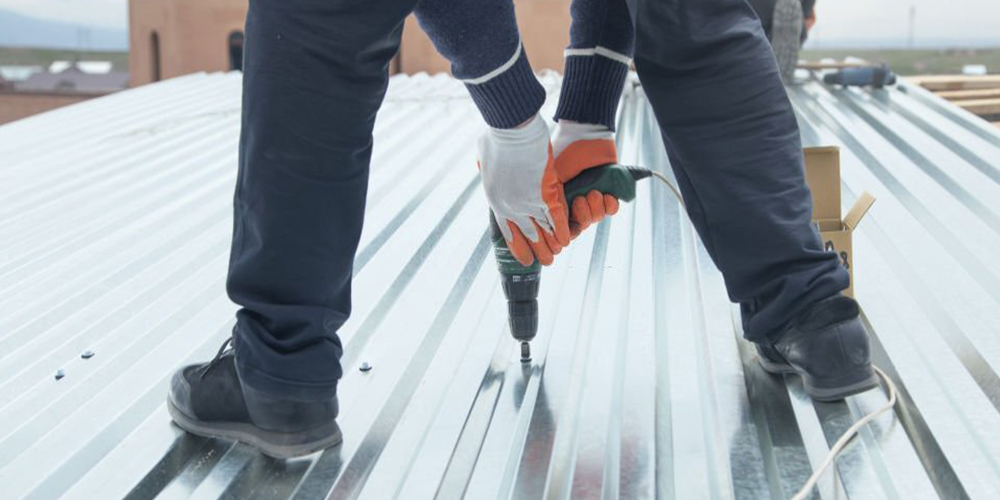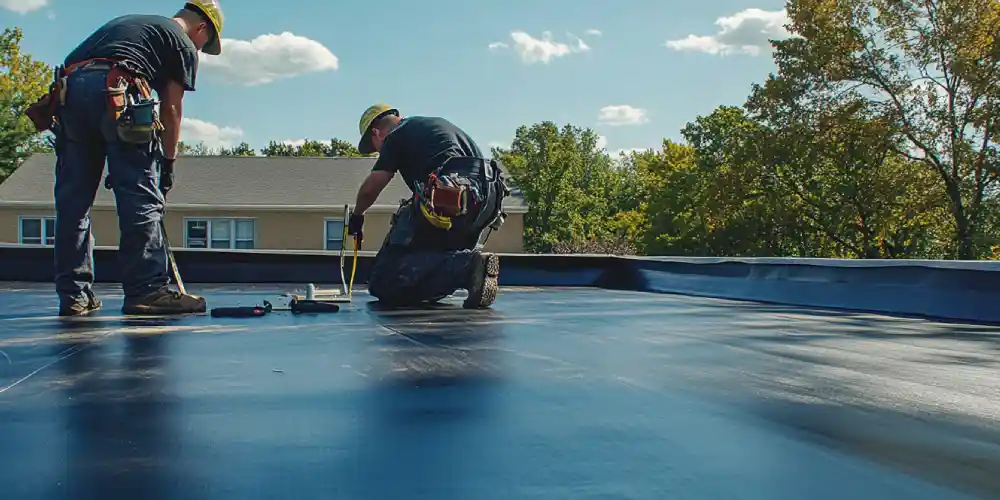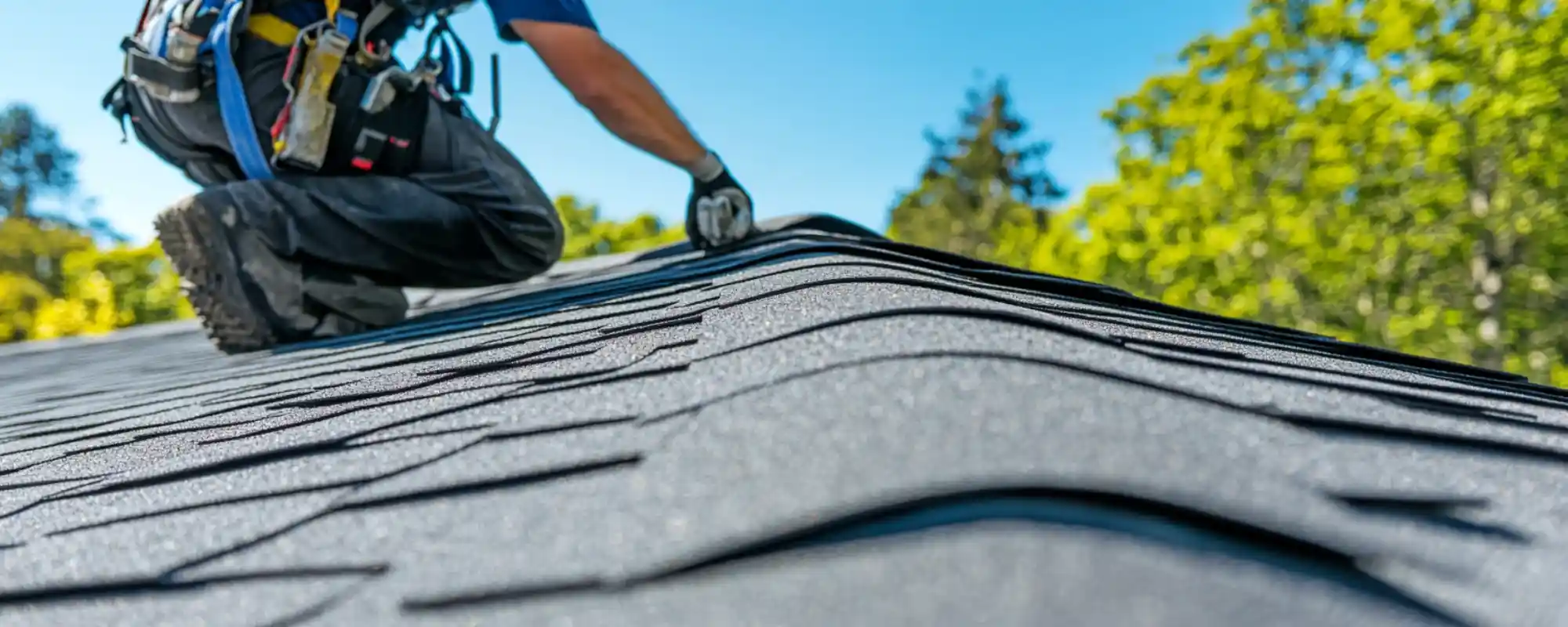Is Metal Roofing More Sustainable? Exploring the Environmental Benefits
•
Written By
Mint Roofing

In today's world, where environmental consciousness is becoming increasingly important, homeowners and businesses alike are seeking sustainable solutions that not only protect their properties but also contribute to a greener future. One such solution that has gained significant attention is metal roofing. But is metal roofing more sustainable than traditional roofing materials? Let's explore the environmental benefits of this innovative roofing option.
Energy Efficiency and Reduced Carbon Footprint
One of the most significant advantages of metal roofing is its energy efficiency. Metal roofs are highly reflective, which means they can reflect a substantial amount of solar radiation, reducing the amount of heat absorbed by the building. This, in turn, leads to lower cooling costs and decreased energy consumption, ultimately reducing the carbon footprint associated with air conditioning and electricity usage.
Additionally, metal roofs are often coated with specialized cool pigments or reflective coatings, further enhancing their ability to reflect heat and keep buildings cooler during hot summer months. This energy-saving feature not only benefits the environment but also translates into cost savings for homeowners and businesses over the long term.
Durability and Longevity
Metal roofing systems are renowned for their exceptional durability and longevity. Unlike asphalt shingles or other traditional roofing materials that require frequent replacements, metal roofs can last for decades with proper maintenance. This extended lifespan reduces the need for frequent roof replacements, minimizing the consumption of raw materials and the waste generated during the replacement process.
Furthermore, many metal roofing products are made from recycled materials, such as steel or aluminum, further contributing to the sustainability of this roofing solution. By utilizing recycled materials, the demand for new resources is reduced, and the overall environmental impact of metal roof production is minimized.
Recyclability and Minimal Waste
When it comes time to replace a metal roof, the materials can be easily recycled and repurposed, further reducing the environmental impact. Metal roofing systems are highly recyclable, with some manufacturers offering take-back programs to ensure proper recycling and minimize waste.
In contrast, traditional roofing materials like asphalt shingles often end up in landfills, contributing to the growing problem of waste accumulation. By choosing metal roofing, homeowners and businesses can play a role in reducing the amount of waste sent to landfills and promoting a more sustainable future.
Rainwater Harvesting and Stormwater Management
Metal roofs can also contribute to sustainable water management practices. Their smooth surfaces and lack of granules or other materials that can clog gutters make them ideal for rainwater harvesting systems. Collected rainwater can be used for various purposes, such as irrigation, reducing the demand for municipal water supplies.
Additionally, metal roofs can help mitigate the impact of stormwater runoff by directing water away from buildings and into appropriate drainage systems. This can help prevent soil erosion, reduce the risk of flooding, and minimize the strain on local stormwater management infrastructure.
Conclusion
As the demand for sustainable and eco-friendly solutions continues to grow, metal roofing emerges as a compelling choice for homeowners and businesses seeking to reduce their environmental impact. With its energy efficiency, durability, recyclability, and potential for rainwater harvesting, metal roofing offers a multitude of environmental benefits that align with the principles of sustainability. By choosing metal roofing, you can not only protect your property but also contribute to a greener future for generations to come.
Recent Articles

Residential Roofing
The Cost of Impact Resistant Shingles in Pagosa Springs, CO: Is It Worth It?
Protecting your Pagosa Springs home from hail and high winds doesn't have to break the bank. Explore the true cost of impact-resistant shingles and whether they're worth the investment.

Commercial Roofing
The Best Time of Year to Replace a Commercial Roof: Factors to Consider
Replacing a commercial roof is a major investment, and timing is crucial. Explore the best time of year to replace your commercial roof and the key factors to consider.

Residential Roofing
The Best Roofing for Hail in Colorado: Protecting Your Investment
Hail can wreak havoc on Colorado roofs. Discover the best roofing solutions to safeguard your home and investment from the region's unpredictable weather. Our experts provide the insights you need.

Roofing Contractors
Class 3 vs Class 4 Shingles in Colorado: Understanding Impact Resistance
Homeowners in Colorado know that impact-resistant roofing is crucial. Explore the key differences between Class 3 and Class 4 shingles to find the best protection for your home.



